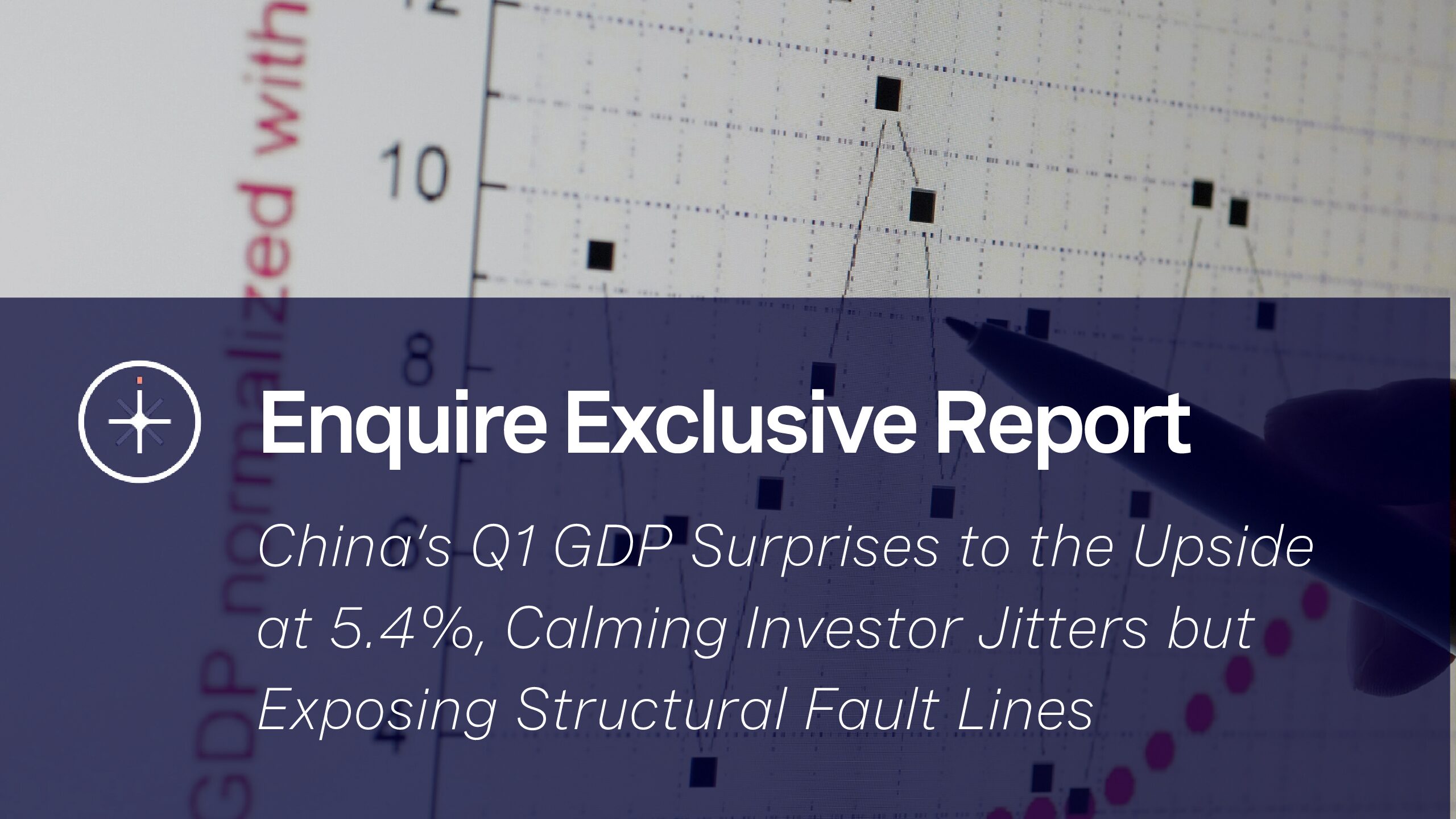Please note: The names of our Experts have been removed from this report to maintain their candid anonymity. Running your own NetworkPulse Q&A would give you full details on respondents and the ability to follow up with Expert Calls and custom engagements.
April 16, 2025 – China’s economy expanded 5.4% year-on-year in the first quarter of 2024, surpassing expectations and injecting a dose of optimism into global markets, even as structural concerns and geopolitical headwinds persist.
The better-than-forecast performance—exceeding the median estimate of 4.8%—was driven by a mix of strong industrial production, resilient exports, and targeted policy support. The headline growth rate marks a promising start to Beijing’s 5.0% full-year target and contrasts sharply with earlier fears of stagnation in the wake of the real estate crisis and youth unemployment pressures.
“Retail sales surged 4.7% YoY, and industrial output jumped 6.1%, with high-tech sectors like EVs seeing over 28% growth,” said a Tokyo-based macroeconomic researcher from Nomura. “Beijing’s continued stimulus—especially infrastructure investment up 6.5%—provided a key floor under growth.” He added that foreign direct investment in manufacturing rose 11.3%, signaling selective global confidence despite lingering structural imbalances.
A Beijing-based China analyst emphasized that front-loaded fiscal spending and aggressive rate cuts played a pivotal role. “What stood out most was the visible rebound in services and consumer confidence during the Spring Festival—retail sales beat expectations, which suggests household confidence is beginning to stabilize,” he said.
Export resilience was another pillar of the Q1 strength. As companies scrambled to front-run steep U.S. tariffs slated to rise in April, outbound shipments rose 1.5% despite weak global demand. “This rush in exports ahead of the tariffs provided a temporary boost,” noted a trade and manufacturing expert based in China. “At the same time, the manufacturing sector’s 6.1% growth, led by high-tech output, shows China is doubling down on innovation.”
But several experts warned that the growth spurt may not be sustainable without deeper reforms. A macroeconomic analyst, pointed out, “The rebound reflects policy cushioning more than organic demand. The property sector remains in a deep freeze, youth unemployment is still above 15%, and consumer credit growth remains tepid.”
Investor sentiment, however, appears to be thawing. The CSI 300 index gained modestly following the GDP release, supported by recent equity stabilization measures and signs of recovering credit activity. But as a real estate expert in China cautioned: “There are still concerns over structural weaknesses and the drag from real estate. Investment in Tier 2 and Tier 3 cities remains constrained, with unsold inventory piling up.”
China’s tech dominance continues to impress, offering long-term growth potential even amid Western skepticism. A longtime German technology executive in Shanghai highlighted that “China leads in 37 of 44 critical technologies globally. Companies like BYD and CATL are now global leaders in EV and battery production, respectively, and patent filings have been surging.”
Globally, Q1’s solid print may lead to upward revisions in regional GDP forecasts. Analysts say this could delay capital reallocation from China to other emerging markets, particularly as Beijing leans further into industrial policy and green tech.
Still, the outlook remains clouded by rising U.S.-China trade tensions and the uncertain trajectory of domestic demand. “This was a strong quarter, but sustaining momentum will require more than stimulus and exports,” he concluded. “Markets are cautiously optimistic, but closely watching real estate, local government debt, and trade policy.”
Your network credits are ready to use now! Ask Now >>

